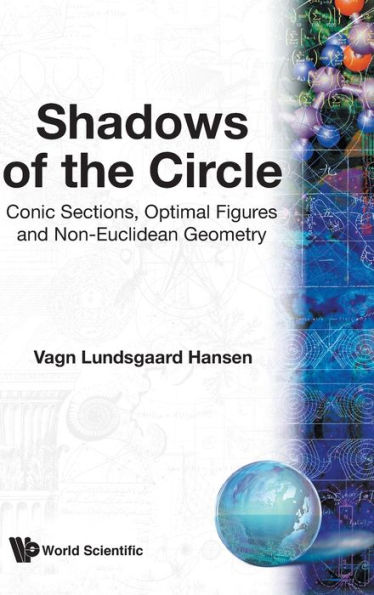Shadows Of The Circle: Conic Sections, Optimal Figures And Non-euclidean Geometry
The aim of this book is to throw light on various facets of geometry through development of four geometrical themes.The first theme is about the ellipse, the shape of the shadow cast by a circle. The next, a natural continuation of the first, is a study of all three types of conic sections, the ellipse, the parabola and the hyperbola.The third theme is about certain properties of geometrical figures related to the problem of finding the largest area that can be enclosed by a curve of given length. This problem is called the isoperimetric problem. In itself, this topic contains motivation for major parts of the curriculum in mathematics at college level and sets the stage for more advanced mathematical subjects such as functions of several variables and the calculus of variations.The emergence of non-Euclidean geometries in the beginning of the nineteenth century represents one of the dramatic episodes in the history of mathematics. In the last theme the non-Euclidean geometry in the Poincaré disc model of the hyperbolic plane is developed.
"1101009701"
Shadows Of The Circle: Conic Sections, Optimal Figures And Non-euclidean Geometry
The aim of this book is to throw light on various facets of geometry through development of four geometrical themes.The first theme is about the ellipse, the shape of the shadow cast by a circle. The next, a natural continuation of the first, is a study of all three types of conic sections, the ellipse, the parabola and the hyperbola.The third theme is about certain properties of geometrical figures related to the problem of finding the largest area that can be enclosed by a curve of given length. This problem is called the isoperimetric problem. In itself, this topic contains motivation for major parts of the curriculum in mathematics at college level and sets the stage for more advanced mathematical subjects such as functions of several variables and the calculus of variations.The emergence of non-Euclidean geometries in the beginning of the nineteenth century represents one of the dramatic episodes in the history of mathematics. In the last theme the non-Euclidean geometry in the Poincaré disc model of the hyperbolic plane is developed.
21.0
In Stock
5
1

Shadows Of The Circle: Conic Sections, Optimal Figures And Non-euclidean Geometry
120
Shadows Of The Circle: Conic Sections, Optimal Figures And Non-euclidean Geometry
120Hardcover
$21.00
21.0
In Stock

Product Details
| ISBN-13: | 9789810234188 |
|---|---|
| Publisher: | World Scientific Publishing Company, Incorporated |
| Publication date: | 04/14/1998 |
| Pages: | 120 |
| Product dimensions: | 6.22(w) x 8.87(h) x 0.48(d) |
From the B&N Reads Blog
